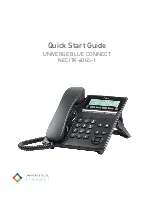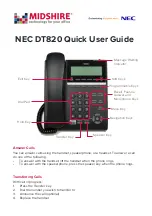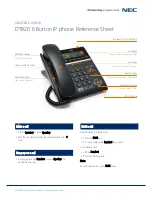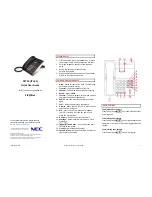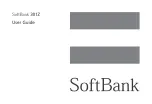
1-10
Cisco MGCP IP Phone Administrator Guide, Release 6.x and 7.x
Chapter 1 Product Overview
Supported Protocols
Supported Protocols
The Cisco MGCP IP phone supports the following protocols.
Table 1-2
Supported Protocols
Protocol
Description
DHCP
Dynamic Host Configuration Protocol. Client or manually configured using
a local setup menu. DHCP is used to allocate and assign IP addresses. DHCP
allows you to move network devices from one subnet to another without
administrative attention. It allows connection of Cisco MGCP IP phones to
the network so that they become operational without having to manually
assign an IP address and additional network parameters.
The Cisco MGCP IP phone supports DHCP as defined in RFC 2131. By
default, the phone is DHCP-enabled.
DNS
Domain Name System. Used in the Internet for translating names of network
nodes into addresses. MGCP uses DNS to resolve the host names of
endpoints into IP addresses.
Dynamic DNS and
TFTP
You can configure additional DNS and TFTP servers. Upon bootup, the
phone first goes to the default TFTP server to download the configuration
files. If a new dynamic TFTP server is specified in the files, the phone
requests a new set of files from the specified server. If new DNS addresses
are specified in the files, the phone uses those addresses for lookups.
HTTP
Hypertext Transfer Protocol. The phone contains limited support for
HTTP 1.1. The phone uses HTTP to retrieve Cisco CallManager XML files.
ICMP
Internet Control Message Protocol. A network-layer Internet protocol that
enables hosts to send error or control messages to other hosts. ICMP also
provides other information relevant to IP packet processing. The Cisco
MGCP IP phone supports ICMP as defined in RFC 792.
IP
Internet Protocol. A network layer protocol that sends datagram packets
between nodes on the Internet. IP also provides features for addressing,
type-of-service (ToS) specification, fragmentation and reassembly, and
security. The Cisco MGCP IP phone supports IP as defined in RFC 791.
RTP
Real-Time Transport Protocol. Supports transport of real-time data (such as
voice data) over data networks. RTP also has the ability to obtain
quality-of-service (QoS) information. The phone supports RTP as a media
channel.
SDP
Session Description Protocol. An ASCII-based protocol that describes
multimedia sessions and their related scheduling information. Third-party
call control is supported using delayed media negotiation, which is SDP data
that is not completely advertised in the initial call setup. SDP also supports
endpoints specified as fully qualified domain names (FQDNs). The Cisco
MGCP IP phone uses SDP for session description.
SNTP
Simple Network Time Protocol. Synchronizes computer clocks on an IP
network. Current date and time are supported using SNTP including time
zone and daylight saving time. The Cisco MGCP IP phone uses SNTP for
date and time support.














